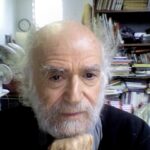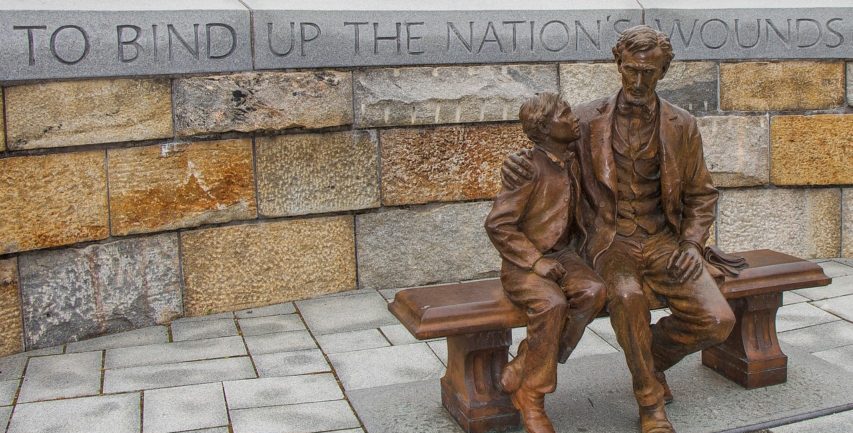Teaching artist Karen Fitzgerald describes what it’s like collaborating with Richard Lewis: “He never says no to an idea. I don’t think he knows the word no. If you have an idea that’s out there, he’s totally willing to explore it. He tries to figure out how it can work with what he is pursuing at the moment. His imagination is always alive, and he is always willing to engage others with it.”
Despite his age, the maverick founder of the Touchstone Center for Children, she believes, is more effusive in expressing himself, more sensitive to how children see ideas and interpret them, than the younger poets she generally works with.
“For him, there is never any right way of doing something. There is only the way things happen to unfold, and responding to that.”
Kathy Creutzburg, who, like Fitzgerald, has done many art projects with Lewis over the years in New York City public schools, carries the same basic notion in a different direction. “In the work of artists coming from organizations like Studio in a School, my organization, there is a commonality. Studio in a School, for instance, has a curriculum. The artists are all different and original, but the tone tends to be the same. With Richard, what is really great is I feel I can step away from a format and do things that are really new and creative.”
She first encountered the poet at a workshop he did for Studio over twenty years ago. “I liked his workshop a lot because he connected art-making with the natural world, which is what a lot of my own work does.” Creutzburg, who spent much of her early life in rural Illinois, illustrated Lewis’ much-loved, book-length poem, We Are Rivers. The poem features his characteristic habit of bringing deep, yet ultimately accessible, ideas to children:
We are rivers
moving
through
ourselvesWe are streams
reaching
towards
riversWe are the waters
of what begins
usWe live
ocean
filledsea
breathingWe live
root
seekingearth
boundOur thoughts turn
as rivers
turnas streams
runas waters
reflectingsun
and moonleaf
and wingcloud
and skyWe are the rivers of
our thoughtsemptying
into
ourselves
“Richard can bring very sophisticated and advanced ideas into the classroom,” Fitzgerald said, “and help children understand them. He will do that by working with very concrete things. He will take a simple rock and hold it in his hand like it’s a piece of gold. Then, he will bring it to his ear and say, ‘You know, I think this rock is whispering something.’ And he will call a child up and say, ‘Well, what do you hear it saying?’”
The two women were asked to consider the influence of Lewis’ teaching method after fifty long years. What is its resonance? How has its impact been felt in the teaching world?
Creutzburg gives the example of the Children’s Workshop School on the Lower East Side, the school her children went to, where she’s worked for approximately ten years with Lewis. She mentioned that during her children’s years there, it was hard to come by funding for art programming and projects. Then, Lewis showed up, and that began to change. The power and appeal of his poetry opened the door to city funding.
“I know he affects classroom teachers tremendously. He gets them to believe in their own imagination.”

Lewis, in fact, does a considerable amount of imagination outreach to teachers, trying to get them to reconnect with the spontaneous, airborne side of themselves. Creutzburg cited the variety of objects he carries around with him: the brightly colored pieces of paper, his precious stones, his little boxes. When needed, he will extend one of his boxes to a teacher with the entreaty, “Can you help me open this?” Should the teacher handle it with mindless impatience, he will say, “There are delicate things inside there. You must open the box slowly, carefully.” And the teacher may slow down, focus, and then be able to relate to a little box with markings, as he or she once did in childhood.
Beyond expanding the teaching terrain of the artists he works with, Fitzgerald pointed out that Lewis’ authenticity alone has an effect on everyone around him.
“The presence of an authentic voice is particularly important right now for all of us, not just children. Then there is his diligence in capturing and archiving what children write, and his reaction to what they write. Towards the end of a workshop, he will ask someone to share what they have written. He will sit there and say in this enchanted voice, ‘That is so beautiful!’ The words really hang in the air, and the child who wrote them can’t help but feel entranced,” she says, sounding somewhat entranced herself. “The way he carries the work of poetry beyond the field of poetry into life makes a tremendous impact.”
Fitzgerald gives her own life as an example. Lewis’ work, she claims, has made her work more joyful and playful. Creutzburg affirms how crucial it was to her developing an “independent voice as an artist.”
In one of the many commemorative events planned for 2019 to mark Touchstone’s 50th anniversary, Lewis will collaborate with Fitzgerald at PS 99 in Queens on an event called The Garden of Whispering, based on his book, Each Sky Has Its Words. Children will immerse themselves in imagining the sound of leaves, the movement of water, the whisperings of the natural world. Then they will write about it.
“We will decide which phrases, or maybe which whole class poem, will be part of the mini-murals that will be outside each classroom door,” Fitzgerald says.
It will mark the continuum, after fifty years, of Lewis’ revolutionary notion that a contemplative approach to teaching children poetry can succeed even in the untethered, unruly New York City school system.
Read more about Richard Lewis and the Touchstone Center for Children here.
Robert Hirschfield is a New York-based poet and nonfiction writer. Much of his nonfiction work are feature pieces on poets such as Chana Bloch, William Stafford, Tuvia Ruebner, Muriel Rukeyser, and Robert Hass. His work has appeared in Salamander, The Jewish Review of Books, Tricycle, Sojourners, and The Writer.




